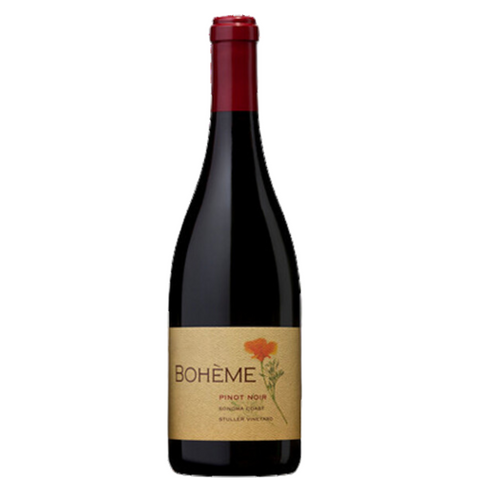
2019 Boheme "Stuller Vineyard" Pinot Noir, Sonoma Coast, California, USA
Bohème's darkest-toned and most finely-textured Pinot Noir: Stuller Vineyard shines with savory earthen notes, botanicals, dark fruits and boysenberries with foundation of crushed rock, black tea and forest floor.
There are 3 units left in stock.
ABOUT THIS WINE
Stuller Vineyard grows amid redwoods on the Sonoma Coast Range at 1,209 feet elevation with views to the Pacific, 6.4 miles west. Ocean breeze and the scent of redwood forest drift over the two vineyard blocks: one steep slope of clay loam (Dijon 115) and a gravelly hilltop (Dijon 667).
2019 Pinot Noir: Stuller Vineyard was harvested in stages between September 23rd and October 7th with a yield of 1.66 tons per acre. The 30% whole-cluster fermentation lots received cold-soak and hand punch-down treatment, then aged 22 months in 20% new French Burgundy barrels before bottling.
ABOUT THIS PRODUCER
Driving the backroads of the southern Sonoma Coast, Beitler has his trio of leased vineyards, all windy and poor-soiled (both qualities excellent for making lower-alcohol, balanced Pinot Noirs and Chardonnays).
Bohème produces only about 1,500 cases per vintage, and that’s in a good year on the perpetually rugged coast. His troika of vineyards (soon to be four)—English Hill, Taylor Ridge and Stuller— produce grapes with somewhat disparate attributes derived from their particular terroir. For instance, while grapes from one might contribute salty, licorice flavors, others may be more floral and grapes grown on the third might display more fruit or less acidity.
Beitler maintains a style that keeps the wines in check—no trifle, given the often-harsh conditions the coastal terrain bestows, which at once can be damning and a blessing. That is, they are exquisitely flowery, delicate on the palate and always have spritely acids that are as brisk as they are cleansing. Bohème Chardonnays and Pinot Noirs are in the 13.5 to 14.3% alcohol range—low by California standards. When conditions bring lots of rain, cold and searing winds, the fruit can hold back its sweet delights, thereby elevating the acid levels to puckery-ness. But in the hands of a sensitive soul such as Beitler, the results can be gorgeous.
Part of the beauty of growing grapes close to the ocean, he explains, is that there’s a long growing season without accumulating sugars fast, and the wines are able to maintain complexity. “There’s a lot of pressure on New World producers for explosiveness, and Pinot Noir is no exception. Many take great pains to darken the wines, concentrate the flavors, soften the acidity.”
